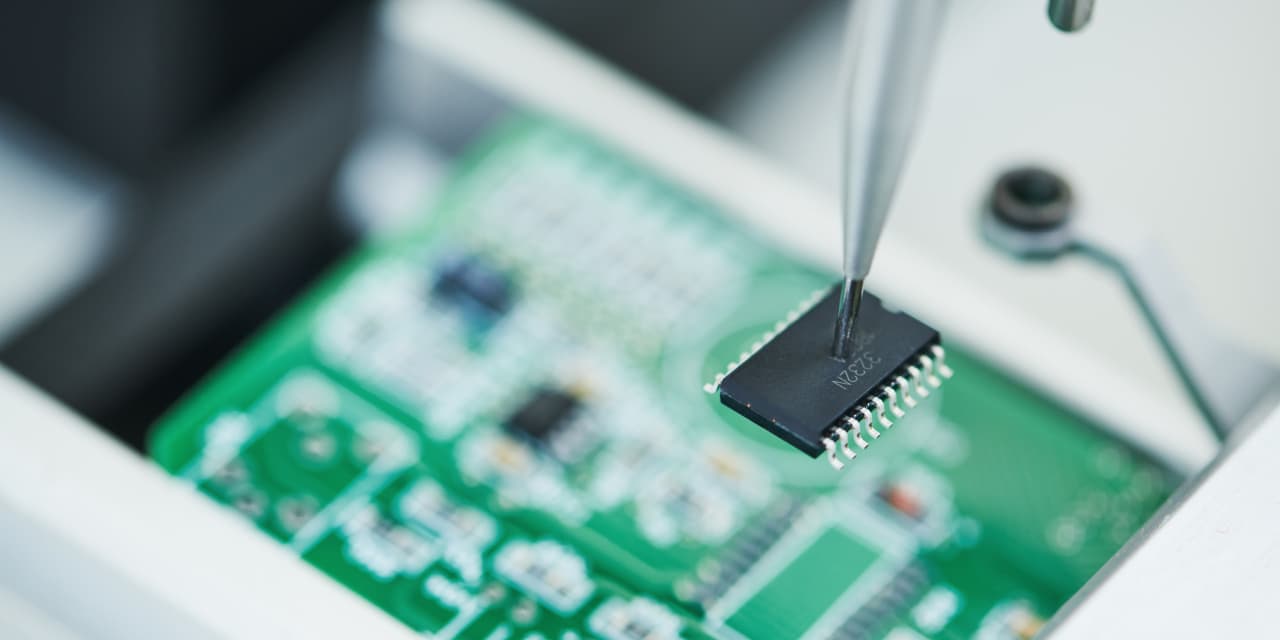Chip stocks have gotten crushed recently—and shares of
ON Semiconductor
are no exception. It’s cheap now, and could pop if it beats earnings expectations on Monday.
ON stock (ticker: ON) is down about 25% to a recent $81.16 from its record high hit this summer amid tech-sector weakness and concerns about restrictions on exporting to China. The decline was compounded by a selloff in the chip sector on Wednesday caused by
Texas Instruments
(TXN), which missed sales forecasts when it reported earnings after Tuesday’s close and said it saw weak demand from industrial customers. That caused all semi stocks to fall—
iShares Semiconductor ETF
(SOXX) declined 4%—and ON, which sells to some of those same customers, dropped 4.6%, closing at its lowest level in five months.
With the stock down so much in a short time, though, much of those concerns are likely reflected in ON’s shares. And with the company set to report earnings on Monday, it will have a chance to show that concerns about China, industrials, and other businesses are holding up just fine.
“Longer term, ON is on a much better road map in terms of the demand outlook,” says Mizuho analyst Vijay Rakseh. “No reason why it shouldn’t be a buy.”
The short-term is the problem right now and earnings could be the solution. Analysts project sales of $2.15 billion in the third quarter and earnings of about $1.34 a share. Both would be slightly lower than during the same period one year ago, almost entirely because of a decline in consumer-related chip sales. The company, though, said on its second-quarter earnings call that its forward guidance, which analysts use to configure their estimates, was conservative because of the economic picture.
ON, though, has a track record of beating earnings estimates, topping forecasts in 17 of the last 20 quarters, according to FactSet, and has grown sales at about 11% annually in the past four years. That’s why “we remain buyers ahead of ON’s print on 10/30 and reiterate our overweight rating and $130 price target,” writes Wells Fargo analyst Gary Mobley.
The China issue, meanwhile, isn’t as damaging to ON as it is to others. Chips meant for electric vehicles and many consumer electronics, which comprise a significant portion of ON’s sales, were kept out of the restrictions. “ON is not impacted by the ban,” says Deutsche Bank analyst Ross Seymour.
Nor is the company as exposed to industrials quite the way Texas Instruments is. ON gets almost half its revenue from the auto industry, which needs chips for software-based technologies. These products are higher priced, and the company says it expects annual sales to grow in the high teens in these segments. It’s a big reason why analysts project total revenue growth of about 12% annually from the start of this year through 2026, when sales could hit $11.7 billion. These chips are more profitable, too, and analysts expect gross margins to rise to over 50% by 2026, which could power close to 16% annual bottom-line growth through that year.
Combine that with stock buybacks and EPS would grow almost 18% a year to $8.48 by 2026. The company plans to use about half of its cash flow for repurchases, which is achievable, given that it will likely slow down its increases of long-term investments such as new equipment.
The growth—and any evidence of it on its upcoming earnings—should drive the cheap stock higher. It trades at just under 15 times EPS estimates for the coming 12 months, below its peak for the year of just over 20 times. It trades at less than the
S&P 500’s
17 times, and it’s expected to grow EPS faster than the index.
“ON is relatively cheap,” says John McGinn, analyst at Laffer Tengler Investments, which is now considering buying shares.
We recommend doing the same.
Write to Jacob Sonenshine at [email protected]
Read the full article here













Leave a Reply